Looking for the best Pho in Hanoi? You’ve come to the right place. In this 2025 guide, we’ll show you what makes Hanoi’s Pho so unique — from its clear, fragrant broth to its perfectly balanced toppings — and take you to the city’s most beloved spots, including the legendary Pho Bat Dan. Whether you’re exploring the Old Quarter at sunrise or craving a late-night bowl after a long day, this guide will help you find the most authentic Pho Hanoi has to offer.
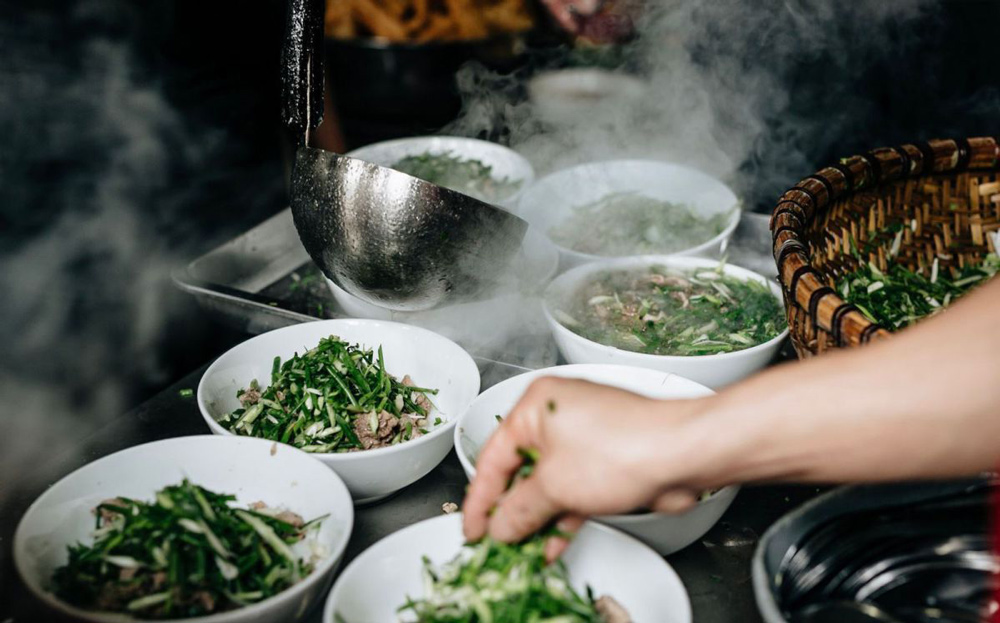
You’ve probably tried Pho before — maybe in a restaurant abroad or a trendy café back home. But until you’ve had it in Hanoi, you haven’t truly met the soul of this dish. Here, Pho isn’t just a bowl of noodles; it’s a morning ritual, a symbol of comfort, and a deep part of the city’s cultural identity. The locals don’t eat it for novelty — they eat it because it’s how they start the day, every day.
In Hanoi, the aroma of simmering broth drifts through the early morning air, guiding you down narrow alleys to tiny shops packed with regulars slurping their first bowl before work. The sound of chopsticks clinking and the sight of steam rising from the pot capture the rhythm of daily life in Vietnam’s capital. This is where Pho was born — and where it remains at its purest.
And right now, in October 2025, with the cool autumn breeze settling over the city, there’s truly no better time to experience it. This guide will lead you to the most authentic Pho Hanoi — explaining what makes the local style distinct, where to find the legendary shops, and how to enjoy every spoonful like a true Hanoian.
Get ready to taste history, one fragrant bowl at a time.
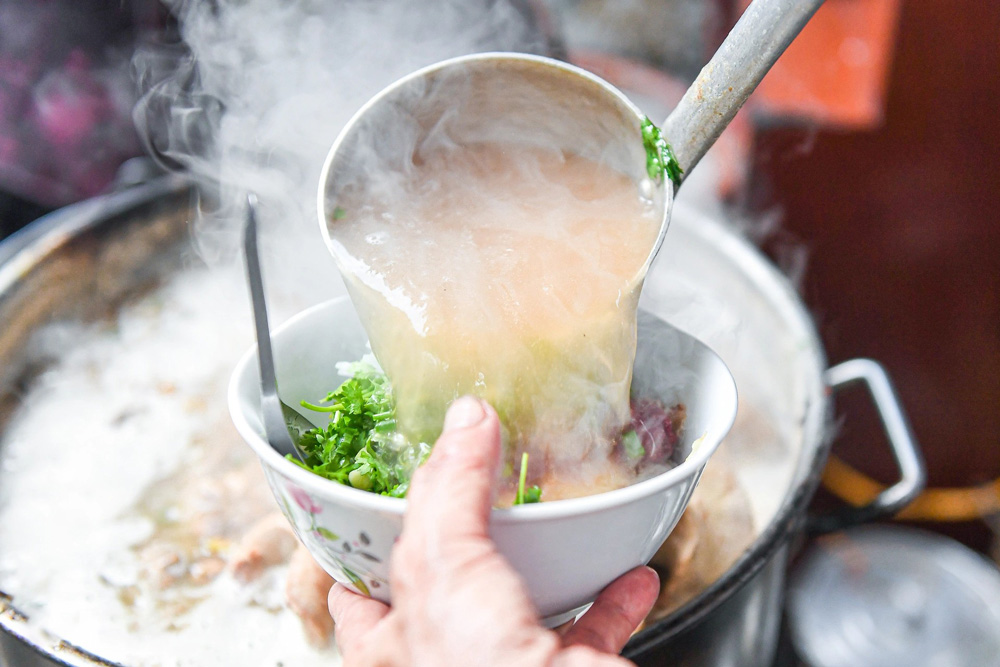
If there’s one dish that defines Hanoi, it’s Pho — and nowhere else in Vietnam does it taste quite the same. When people talk about “Hanoi-style Pho,” they’re referring to the original version of this iconic noodle soup, the one that started it all before regional variations added their own twists.
The secret of Pho Hanoi lies in its broth — crystal clear, delicate, and profoundly flavorful. Unlike the southern version, which tends to be sweeter and loaded with spices, Hanoi’s take is all about balance and purity. The broth is made by simmering beef bones for hours with charred ginger, onion, and star anise, extracting every bit of natural sweetness from the bones while keeping the flavor clean and refined. There’s no sugar rush, no heavy seasonings — just the comforting depth of slow-cooked perfection.
A bowl of Pho Hanoi is a study in restraint. Forget the overflowing plates of bean sprouts, basil, and hoisin sauce you might see elsewhere. Here, it’s all about simplicity — a few slices of tender beef or chicken, soft rice noodles, a scattering of chopped green onions and cilantro, and that extraordinary broth doing all the talking. Locals might add a squeeze of lime, a few chili slices, or a dash of vinegar — but nothing that overshadows the main flavor.
This minimalist style isn’t just a culinary choice; it’s part of Hanoi’s philosophy — appreciating quality over quantity, and letting ingredients speak for themselves. One sip of that broth, and you’ll understand why Pho here isn’t just food — it’s a tradition.
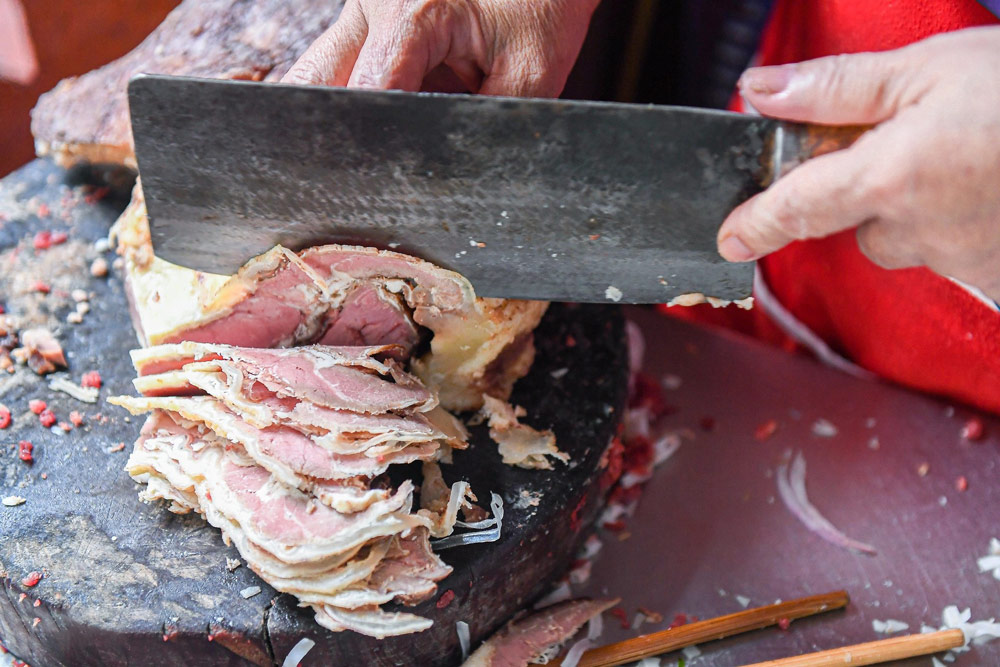
If it’s your first time sitting down at a Pho Hanoi shop, the menu might look short and simple — but every choice tells its own delicious story. To truly appreciate the dish, it helps to know what’s in your bowl and how each element comes together to create that unforgettable flavor.
Everything begins with the broth — the beating heart of Pho Hanoi. It’s not something that can be rushed; locals know it takes at least eight hours of slow simmering beef bones, charred onion, and ginger to reach perfection. The result is a clear, golden broth that tastes rich yet light, with just enough aroma from star anise and cinnamon to make it deeply comforting but never overpowering.
Next come the bánh phở, soft flat rice noodles that cradle the broth like ribbons. In Hanoi, the noodles are fresh and slightly chewy — never mushy — giving the perfect balance between texture and flavor. They soak up the broth beautifully, turning each bite into a soothing, slurpable joy.
Now to the main event — the beef. This is where your ordering skills come in:
Some spots even offer Phở Gà (chicken Pho), a lighter alternative that’s just as beloved.
Every Pho Hanoi table comes with its own little set of secrets — jars and bottles waiting to help you make the bowl your own. The essentials? A small jar of garlic-soaked vinegar, a Hanoi specialty that adds a bright, tangy kick; slices of lime or tiny kumquat for freshness; and a spoonful of chili sauce for those who like heat. Add carefully — Pho here is so balanced that just a touch goes a long way.
Once you’ve adjusted it to your liking, take a sip. That first spoonful — rich broth, silky noodles, tender beef — is Hanoi in a bowl.
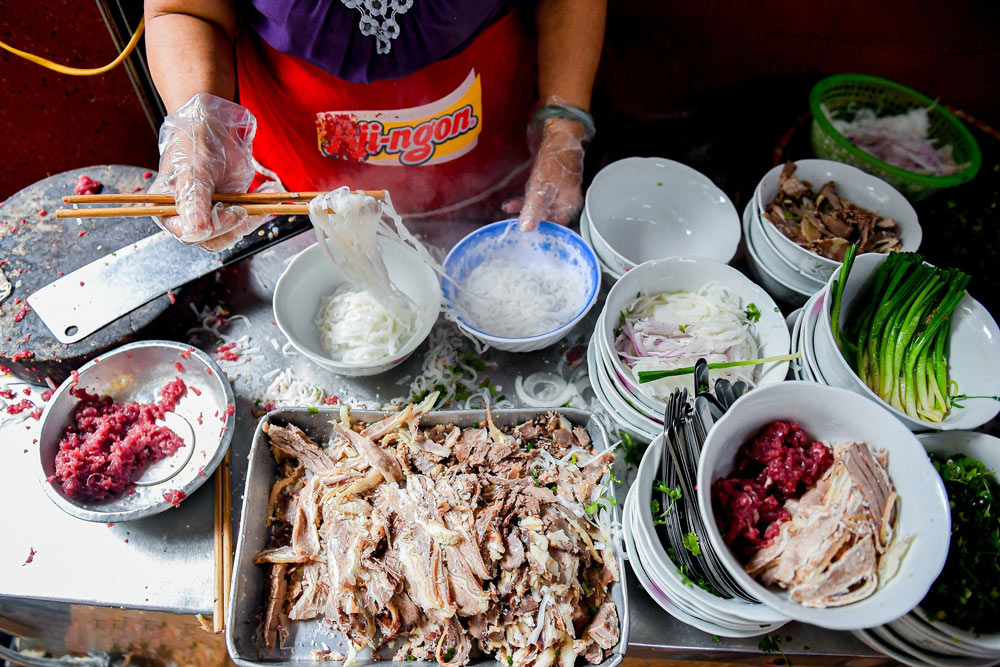
Every food lover who visits Hanoi ends up making the same pilgrimage — the search for that perfect, soul-warming bowl of Pho. The good news? You don’t have to look far. The city is dotted with decades-old institutions and beloved neighborhood shops where the recipe hasn’t changed in generations. Here’s where to find the real thing.
Hanoi's phở landscape is anchored by institutions that have transcended mere restaurant status to become culinary legends. These are places that have not only preserved tradition but have, in some cases, audaciously redefined it, creating new and influential expressions of the city's favorite dish.
On Lò Đúc street, outside the immediate frenzy of the Old Quarter, stands a shop that committed a delicious act of heresy in 1979. Phở Thìn is a legendary spot with a unique twist: they stir-fry the beef with garlic before adding it to the soup, creating a richer, more fragrant, and slightly fattier broth that is incredibly delicious. This single innovation created a new and beloved branch on the phở family tree, a smoky, robust counterpoint to the city's more traditional bowls.
Practical Information
The Culinary Signature: Phở Tái Lăn The technique that defines Phở Thìn is known as tái lăn. Thin slices of beef are not simply blanched in the hot broth in the traditional style (tái). Instead, they are seared in a searingly hot wok with garlic, ginger, and scallions until caramelized. This process renders some of the beef fat and creates a cascade of new flavors. The smoky, garlicky juices from the wok are then added to the bowl along with the meat, fundamentally altering the broth. The result is a soup that is deeper, more aromatic, and visibly richer than its traditional counterparts, with a powerful umami character and a strong garlic aroma. Each bowl is finished with a generous pile of freshly chopped scallions, their sharp, green bite providing a necessary contrast to the richness of the beef and broth.
The Experience: Organized Chaos Dining at Phở Thìn is an exercise in delicious efficiency. The original location is a classic "hole-in-the-wall" establishment where the focus is squarely on the food, not the decor. The space is small and often crowded, with a rapid turnover of tables; diners should be prepared to share a table with strangers during peak hours. The menu is famously minimalist: you are here for one thing, the stir-fried beef phở, a dish they have perfected over four decades. Very little English is spoken, but the process is simple: pay your money, receive your bowl, and savor a true original.
The immense popularity of the Lò Đúc location has naturally led to attempts at expansion. Several franchised locations have appeared over the years, aiming to replicate the original's success. However, the evidence suggests that the magic of Phở Thìn is inextricably linked to its original home. Reviews of a second branch, now permanently closed, noted that it offered a "more subdued flavor" compared to the main store. This demonstrates the difficulty of scaling an artisanal product where the specific cooks, the seasoned woks, and the very atmosphere of the original shop are essential ingredients. For the traveler, this distinction is paramount. The pilgrimage is not just to "Phở Thìn," but specifically to the original at 13 Lò Đúc, as its franchised iterations have proven unable to capture the authentic, potent flavor that made the brand a legend.
Within the tangled, historic streets of Hanoi's Old Quarter lies the undisputed benchmark for traditional northern-style phở. This is the bowl against which all others are measured, a testament to the power of purity and consistency.
For anyone seeking the quintessential Hanoi phở, the journey ends at 49 Bát Đàn Street. This is a true Hanoi institution famous for its consistently excellent broth and its long, yet fast-moving, queue. It is adored by locals and travelers alike, and one must be prepared to line up for what many call the best bowl in the city.
A crucial point of clarification is necessary for any visitor. The restaurant is colloquially known as "Pho Bat Dan" after its street address. However, its proper name is Phở Gia Truyền, which translates to "Heirloom Phở," a name that speaks to its multi-generational legacy. The two names refer to the same celebrated establishment at 49 Bát Đàn, a fact that clears up one of the most common points of confusion for first-time visitors.
Practical Information
The Culinary Signature: Purity of Broth Where Phở Thìn is defined by its bold, smoky innovation, Phở Gia Truyền is a temple to tradition. Its reputation is built on the sublime purity of its broth. Simmered for hours, the soup is remarkably clear yet profoundly deep in flavor, with a delicate, clean beefiness and a perfectly balanced whisper of star anise, cinnamon, and other spices. The menu is a testament to confidence and mastery, offering just a few simple choices of beef cuts (such as rare sliced beef, well-done brisket, and flank). This limited selection signifies that the restaurant has perfected its craft, focusing all its energy on executing a flawless, classic bowl of phở.
The Experience: The Self-Service Ritual The unique ordering process at Phở Gia Truyền is as famous as the phở itself. The "self-service" system where you carry your own bowl to the table is part of the authentic experience. This is not a place for leisurely table service. As described by patrons and guides, one must follow the tradition: join the queue that often snakes out the door, place your order and pay at the counter, watch as your bowl is expertly assembled in front of you, and then carefully navigate the crowded dining room to find an open seat. This system, born of necessity, is a model of efficiency.
The queue and self-service model is more than just a charming quirk; it is a brilliant operational solution to overwhelming demand within short service windows. A conventional restaurant model would collapse under the pressure. This assembly-line process—order, pay, receive, seat yourself—maximizes throughput, allowing the shop to serve hundreds of customers in just a few hours. Furthermore, this system acts as a cultural filter. It implicitly selects for diners who are serious about the food and willing to participate in the local custom, deterring those who might be looking for a more relaxed, tourist-oriented experience. In doing so, it preserves the restaurant's authentic, bustling Hanoian atmosphere despite its international fame, which includes a mention in the Michelin Guide as a place "Worth Queueing For". The queue is not an inconvenience; it is a participatory ritual that builds anticipation and makes the final reward—that perfect bowl of phở—all the more satisfying.
A powerhouse in the Hanoi phở scene, Phở 10 Lý Quốc Sư has become a celebrated chain, but its original location near St. Joseph's Cathedral remains an essential stop. It strikes a balance between street-food energy and modern comfort, serving what many consider one of the finest bowls in the city to locals and tourists who queue for the privilege.
Practical Information
The Culinary Signature: Refined and Reliable Recognized by the Michelin Guide, this shop is known for its high-quality, classic phở. The broth is rich without being overpowering, and the beef is consistently tender. The visible kitchen offers a glimpse into the theatrical assembly of each bowl, where soup is ladled with practiced dexterity.
The Experience: Air-Conditioned Authenticity Unlike many older establishments, Phở 10 Lý Quốc Sư offers the comfort of air conditioning and communal tables, blending a traditional street-food vibe with a more relaxed dining environment. The service is famously efficient and fast-paced, designed to manage the constant crowds.
Tucked away in a small alley, Phở Sướng lives up to its name, which translates to "happy" or "satiated." This spot is a local favorite, renowned for its deeply flavorful broth and generous portions that promise a satisfying meal.
Practical Information
The Culinary Signature: Richness and Generosity The focus at Phở Sướng is on quality ingredients, particularly the tender beef slices and a rich, flavorful broth. It's a place that prioritizes the core elements of a great bowl of phở, delivering a consistently delicious experience.
The Experience: A Local's Secret This is an authentic, no-frills street food spot where the setting is simple and the food is the star. The space is small, so diners should be prepared to share a table during peak hours. To get the best selection of meat, it's wise to arrive early before the crowds descend.
For those who appreciate the finer details of beef, Phở Khôi Hói is a must-visit. This Michelin Bib Gourmand recipient is named after its owner's signature hairstyle ("bald Khôi") and is celebrated for its exceptional beef quality and variety.
Practical Information
The Culinary Signature: A Cut Above What sets this shop apart is its dedication to beef. It offers a wide array of cuts, allowing diners to customize their bowl, and is particularly known for serving rare parts like beef heel muscle. The broth is praised for being light, refined, and deeply flavorful, complementing the high-quality meat.
The Experience: Efficient and Flavorful This is a bustling restaurant loved by Hanoians for its outstanding phở. Despite being constantly packed, the service is efficient, and you'll rarely have to wait long for a seat, though you may be asked to share a table.
Providing a delicious alternative in a city dominated by beef phở, Phở Hạnh is a long-standing specialist in chicken phở (phở gà). This evening-only spot has been a local favorite for over two decades.
Practical Information
The Culinary Signature: Beyond the Broth While serving excellent traditional chicken phở, Phở Hạnh is also famous for its unique variations. The dry chicken phở (phở gà trộn), a noodle dish served with shredded chicken, papaya, peanuts, and fried shallots instead of broth, is a must-try. The chicken salad is another popular dish.
The Experience: Sidewalk Dining Phở Hạnh offers a quintessential Hanoi street food experience, with diners seated on small plastic stools along the sidewalk. It's a bustling, atmospheric spot to enjoy a different but equally traditional side of Hanoi's noodle culture.
While the legendary establishments provide essential benchmarks, the true joy of a phở pilgrimage lies in discovery. Armed with the right knowledge, any traveler can become a "phở detective," capable of identifying exceptional bowls in unmarked alleyways and nameless storefronts. This is achieved by following a set of golden rules—observational cues that signal authenticity and quality.
'Look for a place that is packed with locals on motorbikes between 7 AM and 9 AM.' This is the single most reliable indicator of quality. The morning rush hour, from roughly 7 AM to 9 AM, is when Hanoians partake in their daily phở ritual. A dense cluster of parked motorbikes outside a phở shop during this window is a real-time, hyperlocal rating system. It signifies overwhelming approval from the city's most discerning critics: its residents. This visual cue is often more trustworthy than any online review.
'Look for a simple, no-frills setup with giant, steaming vats of broth.' This observation speaks to a core tenet of Vietnamese street food culture: the resources are invested in the food, not the furniture. A simple setup of metal tables and plastic stools indicates that the proprietor's focus is singular. The giant, perpetually steaming vats of broth are a visual guarantee of two things: high turnover, meaning the ingredients are always fresh, and a broth that has been simmering for hours to extract every bit of flavor from the bones, not one made quickly from concentrate or powder.
'If the menu only has a few options, you know they've perfected their craft.' This is the specialist rule. A restaurant with a sprawling menu offering phở alongside dozens of other unrelated dishes is a generalist. A shop that serves only phở, and perhaps only beef phở (phở bò), is a master. This principle is perfectly embodied by both Phở Thìn, with its singular dedication to tái lăn , and Phở Gia Truyền, with its three simple beef options. A limited menu is not a sign of limitation; it is a declaration of confidence and a commitment to perfection.
By using the legendary spots in this guide as a starting point to calibrate the palate, and then applying these golden rules of observation, the intrepid traveler can confidently venture off the beaten path. The ultimate goal of the phở pilgrimage is not just to taste the famous bowls, but to use that knowledge to discover a personal favorite—a hidden gem in a quiet alley that serves a bowl of phở that, for you, is the best in Hanoi.
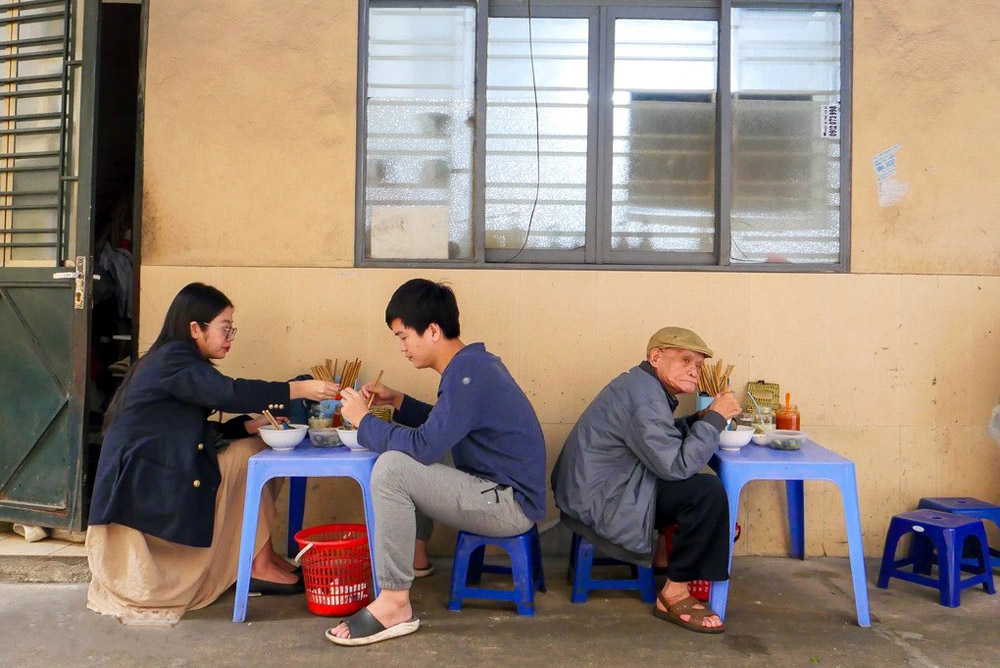
Even seasoned travelers can get a little lost when it comes to ordering or understanding Pho in Hanoi. Don’t worry — these quick answers will help you eat with confidence and maybe impress the locals while you’re at it.
The biggest difference is in the broth. Hanoi’s Pho is all about clarity and depth — a clean, savory stock that highlights the natural flavor of beef. It’s less sweet and less spiced than the Southern version. You also won’t see heaps of basil, bean sprouts, or hoisin sauce here; Hanoi keeps things minimal. Just noodles, meat, broth, and a sprinkle of herbs — simple, balanced, and timeless.
Ask ten locals and you’ll get ten different answers — but one name always rises to the top: Phở Gia Truyền Bát Đàn. It’s an icon. Expect to wait in line, especially in the morning, but the reward is worth every minute. One spoonful of that hot, fragrant broth and you’ll understand why it’s on every “must-try” list for Pho Hanoi.
This is a fun question — and a common mix-up! The two didn’t eat Pho together. They shared a meal of Bún Chả, a grilled pork and noodle dish, at Bún Chả Hương Liên on Lê Văn Hưu Street. It’s a great spot to visit, but if you’re on a Pho hunt, you’ll need to head elsewhere.
If you’ve seen this name online, it’s likely referring to a restaurant in Singapore’s Amoy Street Food Centre, not an actual location in Vietnam. So if you’re wandering the streets of Hanoi looking for it, you won’t find it — but don’t worry, there are plenty of authentic spots waiting for you here.
Menus are short but specific. Here’s what you need to know:
Once you’ve got these few terms down, you’re ready to order like a pro — and enjoy your bowl the way locals have for generations.
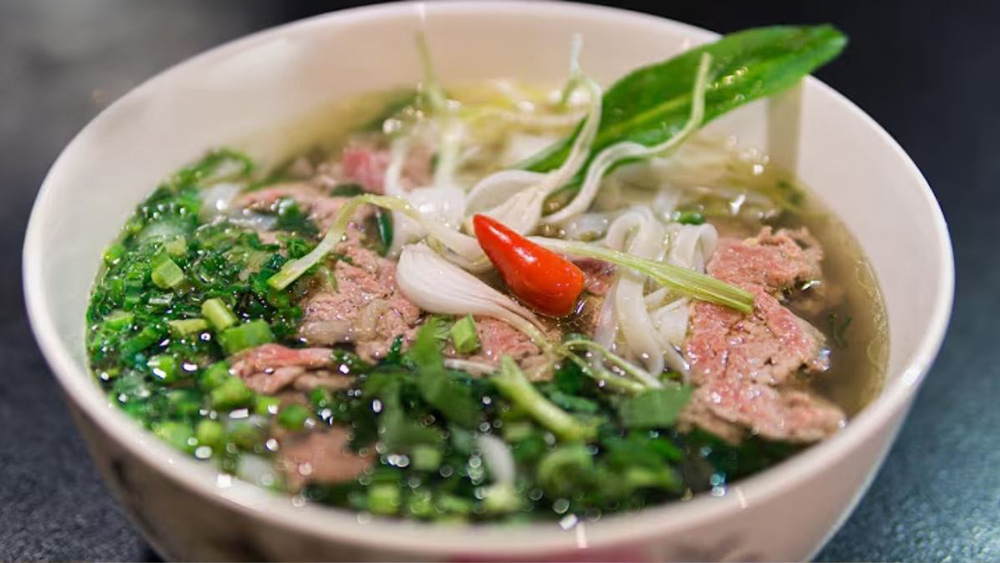
In Hanoi, Pho is so much more than a meal — it’s the city’s heartbeat. Every bowl tells a story of patience, craft, and pride passed down through generations. It’s the scent of broth simmering before sunrise, the sound of scooters outside tiny street-side shops, and the simple comfort that locals never tire of. Whether it’s your first morning in the city or your fifth visit to Vietnam, Pho Hanoi always feels like coming home.
For locals, it’s breakfast. For travelers, it’s discovery. For everyone, it’s love at first sip — a blend of warmth, balance, and flavor that defines the capital’s culinary soul.
So set your alarm early, follow the steam rising from a busy corner, and pull up a small plastic stool among the locals. Let that first spoonful of clear, fragrant broth remind you why Pho became Vietnam’s most iconic dish. Your true Pho Hanoi experience is waiting — and it’s one you’ll never forget.
Planning Your Trip? Let Asia Mystika Make It Effortless.
If you’d rather spend your time savoring bowls of Pho instead of worrying about logistics, let Asia Mystika handle the details. As a trusted Vietnam-based tour operator, Asia Mystika helps travelers craft authentic, food-filled journeys through Hanoi and beyond — from guided culinary tours to custom travel experiences that fit your pace and passions.
Contact Asia Mystika today to plan your trip, and get ready to taste, explore, and fall in love with Vietnam — one bowl of Pho at a time.
WhatsApp: (+84) 866.22.7878
Planning trip: Click here
Email: sales@asiamystika.com
Website: www.asiamystika.com
Asia Mystika Profile: Click Here